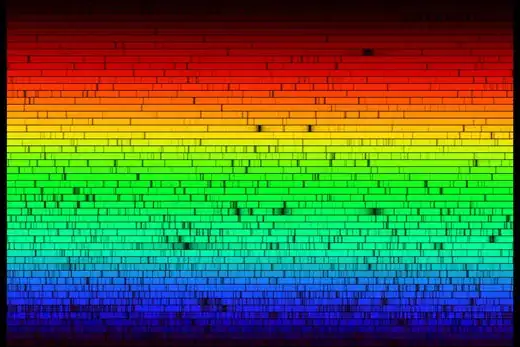Light is infinite dimensional (up to quantum fuzziness).
The number of photons of each frequency of light is independent of the photons of other frequencies of light, even ones the smallest distance away.
Our ability to sense light is based on (usually) a three pigment system in our eyes (some humans have 4, some have 2 and some have 1 or 0). These three pigments, plus our brain, map this infinite dimensional space into a 3 dimensional one.
When we see "pure red" plus "pure green" looks like "yellow", this means that when we excite the pigments in our eye with "red" and "green" photons in equal amounts, the result is the same as if we excited the pigments with "yellow" photons.
The "red" and "green" photons never become yellow photons. Your inability to distinguish red+green from yellow is in effect an optical illusion caused by limitations in how you see.
A creature with certain kinds of different, or more, pigments would not confuse "red+green" and "yellow"; the two might look completely different.
Because of how we sense light, there are colors we can see that do not correspond to any single frequency of light. There are no "brown" photons, nor are there "white" photons. These correspond to certain mixtures of photons in the 3 dimensional projection of the infinite dimensional color space that is real light.
There are tools that let us distinguish between "red+green" and "yellow" light. The easiest is a prism -- each photon of light will be bent differently from it, so a narrow point-source of "yellow photons" will bend together, while "red+green" will be split apart by the prism.
Note that this doesn't match your art class colour mixture. Paint mixes via subtraction (each pigment absorbs certain colours and reflects the rest, and when you mix two both of their absorbtion occurs to some extent).
Photons or light mix by addition.
A big difference is that if you mix all your pigments together, you get a muddy brown or black (mixing many pigments can violate the region where the "absorbtion combines" approximation works, preventing it from being black). If you mix all your lights together, you get white (assuming they are in the right balance).
